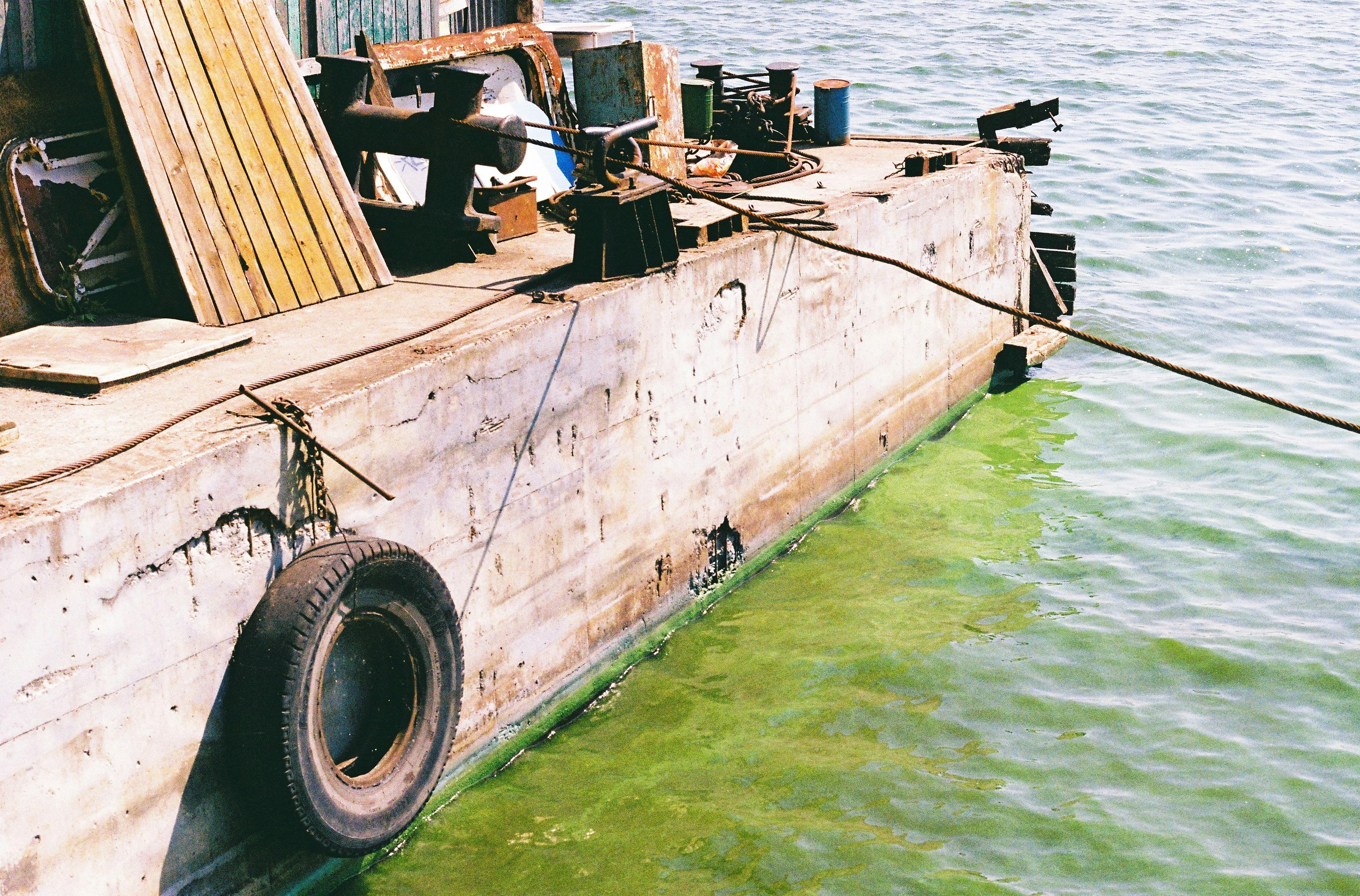Benefits of Demineralized Water
Demineralized water is water that has been treated to remove minerals, such as calcium and magnesium, from it. This process is often referred to as deionization or reverse osmosis. Demineralized water has several advantages over regular tap water, and can be used in a variety of applications.One of the main benefits of demineralized water is that it does not have any mineral deposits or hard-water buildup. This means that it will not leave behind any residue when used in appliances like dishwashers or washing machines, which can help reduce the amount of maintenance required for these items. Additionally, demineralized water also helps reduce the amount of limescale buildup in pipes and other plumbing fixtures.
Another advantage of demineralized water is that it does not contain any dangerous contaminants like chlorine, lead, or other chemicals. Many people are concerned about the safety of tap water and prefer to use demineralized water for drinking and cooking purposes instead. Demineralized water also tastes better than regular tap water due to its lack of impurities and minerals.
Demineralized water is also ideal for use in aquariums and fish tanks since it does not contain any minerals which could affect the pH balance in the tank or harm fish health. It can also be used to fill ice cube trays since it will not leave behind any cloudy residue when frozen. Lastly, demineralized water can be used in car batteries since it will not deposit any minerals on the battery terminals which could prevent proper charging.
Overall, demineralized water provides a number of benefits over regular tap water for a variety of applications. It does not have the same problems with hard-water buildup or mineral deposits, does not contain any dangerous contaminants, tastes better than regular tap water, and is ideal for use in aquariums and car batteries.
Impacts of Using Demineralized Water
Demineralized water is a type of purified water that has had most of its natural minerals and ions removed. It is often used in industrial processes and in medical settings, as it helps to reduce the risk of contamination. However, there are potential impacts associated with using demineralized water.The main impact of using demineralized water is that it can be corrosive to certain metals, such as copper and steel. As the minerals that normally protect these metals from corrosion have been removed, they become susceptible to attack from the acidic compounds present in demineralized water. This can lead to accelerated wear and tear on equipment and pipework, leading to costly repairs or replacements if left unchecked. Another impact of using demineralized water is that it can cause damage to plants if used for irrigation. Plants need certain minerals in order to remain healthy, and since these have been removed from the water when it is demineralized, they are unable to absorb them from the soil or environment. This can lead to stunted growth or even death if left untreated.Finally, there is also a potential impact on human health when consuming demineralized water over long periods of time. As humans need certain minerals for proper bodily functions, drinking demineralized water over an extended period could lead to deficiencies in essential vitamins or minerals which could have serious health implications over time.In conclusion, there are various impacts associated with using demineralized water which should be considered before making use of it. It can be corrosive to certain metals and cause damage to plants if used for irrigation purposes, while also potentially having an effect on human health if consumed regularly over time.Demineralized Water
Demineralized water, also known as deionized water, is a process to remove minerals and salts from regular tap water. The process of demineralization is used for various applications such as medical and industrial use, home use, and more. The process of demineralization involves passing the water through a special type of ion exchange resin which removes all minerals from the water. This purification process produces highly purified water that is free from chemicals, salts and other impurities.The main purpose of demineralization is to produce pure drinking water or to provide clean and safe water for industrial use. It usually involves passing the water through an ion exchange resin which removes certain minerals including calcium, magnesium and sodium ions. The resin is designed to attract positively charged ions while rejecting negatively charged ions. The positively charged ions are then replaced by hydrogen ions which in turn are exchanged with chloride ions. This process reduces the amount of dissolved solids in the water giving it a purer taste.
Another method used for demineralizing water is reverse osmosis (RO). This method involves pushing the tap water through a semi-permeable membrane that removes all dissolved solids including salt molecules, metals and other suspended particles from the water. Reverse osmosis results in highly purified drinking water with very low mineral content.
Overall, demineralized water has numerous benefits ranging from providing clean and safe drinking water to aiding various industrial processes where purity is essential. It should be noted however that although demineralized water may be free from impurities, it does not contain essential minerals like calcium and magnesium which our bodies need for proper functioning. Therefore it should not be used as a primary source of drinking but can be used for short periods or for special occasions when its properties are needed.
Electrodeionization (EDI)
Electrodeionization (EDI) is a water purification technology that uses electric current to remove ions from water. It is a continuous process that involves passing water through an ion exchange membrane, which separates the ions from the rest of the solution. The ions that are removed are then collected and discharged as waste. EDI is commonly used to produce ultrapure water for industrial and laboratory applications, but can also be used to treat wastewater or drinking water. EDI technology is considered more efficient and cost-effective than traditional ion exchange processes and can reduce the need for chemical additives. EDI can also reduce the amount of energy required compared to other technologies, making it an attractive option for many industries.
Reverse Osmosis (RO)
Reverse osmosis is a filtration process that uses semipermeable membranes to remove ions, particles, and larger molecules from a solution. It works based on the principle of osmosis, which states that water will move from an area of low solute concentration to an area of high solute concentration. Reverse osmosis is the reverse of this process, where the water is forced through a semi-permeable membrane in order to separate it from dissolved salts and other impurities. The result is clean, fresh-tasting drinking water that has been filtered of contaminants. This process can also be used for desalination, wastewater treatment and removal of toxins from industrial waste streams.With reverse osmosis, a pressure difference between two solutions causes the solvent (in this case water) to move through a semipermeable membrane from one side to the other. To make this happen, an external force must be applied to push the solvent through the membrane. This force can come in the form of electrical energy or pressurized air or gas. As the pressure increases on one side of the membrane, more solvent is forced through until equilibrium is reached and there is no further movement of molecules across the membrane.
Reverse osmosis is a highly effective way to filter out impurities in water and has been used for decades in commercial and residential applications. It can remove up to 99 percent of total dissolved solids (TDS), including salts, bacteria and other contaminants down to 0.0001 microns. This makes it one of the most effective filtration processes available today for producing clean drinking water.
How Does Reverse Osmosis Work?
Reverse osmosis is a water filtration process that uses pressure to force water molecules through a semi-permeable membrane. This membrane is designed to only allow water molecules, and reject any other impurities or contaminants. The pressure of the water pushes it through the membrane, leaving the contaminants behind as concentrated waste. The purified water passes through the membrane, and is collected in a separate container for use.The process of reverse osmosis begins with pre-filtration, which removes large particles such as dirt and sediment. This helps protect the membrane from any potential damage caused by these larger particles. Once pre-filtered, the water is then sent to a semi-permeable membrane for reverse osmosis filtration. The pressure of the water pushes it through the membrane, leaving any impurities or contaminants behind as waste.The purified water passes through the membrane and is collected in a separate container for use. This entire process cleanses and purifies the drinking water to remove harmful chemicals and contaminants, making it safe to drink. It also reduces levels of sodium, chlorine, lead, fluoride and other potentially hazardous substances that may be found in tap or ground water sources.Reverse osmosis can be used for many different applications including drinking water filtration systems, industrial processes such as desalination of seawater or wastewater treatment, aquariums and many more. Reverse osmosis systems are becoming increasingly popular due to their ability to effectively remove unwanted pollutants while preserving beneficial minerals that can be beneficial to health when consumed in moderation.Overall, reverse osmosis is an effective way to filter out contaminants from drinking water sources while preserving beneficial minerals that can be beneficial to health when consumed in moderation.
Is Spring Water a Suitable Alternative to Demineralized Water?
When considering hydration options, understanding spring water demineralization process is essential. Spring water naturally contains minerals beneficial for health, unlike demineralized water, which lacks these nutrients. While both have their uses, spring water offers a more balanced approach to hydration, making it a suitable alternative for many consumers.
Electrodeionization
Electrodeionization (EDI) is a water purification technology that uses electricity to remove ions, such as sodium, calcium, and chloride, from water. The process works by passing the water through an ion exchange membrane, which is composed of two electrodes. As the water passes through the membrane, electricity is applied to the electrodes and ions are drawn out of the water. This allows for very pure and clean water to be produced. The process also reduces the amount of salt in the water, making it much more suitable for drinking. EDI can be used for a variety of applications including industrial water treatment and desalination.EDI works by passing an electric current through a series of ion exchange membranes which contain charged particles called ions. These ions are attracted to one another when an electric current is applied to the membranes and they are drawn out of the solution. As they pass through the membrane, they are removed from the solution and collected in a separate container or sent back into circulation with other elements in the system. This process continues until all of the desired ions have been removed from the solution.
The process of electrodeionization is highly efficient and requires minimal energy input compared to other methods such as reverse osmosis or distillation. It also produces no waste products which makes it very environmentally friendly. In addition, it can be used on a variety of different types of feedwater including surface waters, groundwater, brackish waters, and seawater depending on its needs and requirements.
Overall, electrodeionization is an effective way to purify water so that it can be used for drinking or other industrial processes without fear of contamination or pollution. It is also highly efficient and produces no waste products so it is much kinder to our environment than many other methods available today.

Conclusion
Demineralized water is an important component for many industrial, medical and laboratory applications. It has been made possible by the development of several methods, such as reverse osmosis and distillation. Through these methods, minerals and other impurities from the source water can be removed. The product demineralized water is a highly pure form of water that can be used for many applications.The choice of the demineralization method depends on the source and quality of feed water, requirements for quality of demineralized water, cost-effectiveness and the availability of equipment. Regardless of these factors, demineralization processes are effective in producing high-quality demineralized water. Demineralized water is a critical ingredient in many industrial processes and serves to protect equipment from corrosion as well as helping to ensure that end products are free from contamination.

